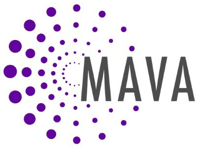This article originally appeared on www.mavanetwork.org and is featured here in partnership with the Minnesota Alliance for Volunteer Advancement.
![]()
Volunteerism is evolving to meet the changing expectations of volunteers.
As societal needs evolve and technology advances, both volunteers and organizations are recognizing new ways to collaborate and create meaningful impact.
Here is an introductory framework of vocabulary to articulate the evolving vision for volunteerism. This article will cover both traditional volunteer roles and our perspectives on expanding these roles.
Classic Volunteer Roles
Volunteering in its classic form includes offering time and skills to support charitable organizations, community projects, and local events. These roles remain vital, providing foundational support and services that communities rely upon.
An estimated 70% to 85% of volunteer positions in nonprofit and governmental organizations have been structured as “Classic Volunteer Roles.”
Characteristics of Classic Volunteer Roles
Those who take on a classic volunteer role are trained and perform a wide range of “hands-on” tasks. These roles are typically:
- Well-defined
- Entry level and use basic or universally held skills
- Directed by staff
- Ongoing
- Keep a tight scope of duties
- Quick to start
Expanded Volunteer Roles
Expanded Volunteer Roles have existed in the past, but there have been fewer of these than the “Classic Volunteer Roles.
Many consider this to be an underdeveloped area of volunteerism; one that has great potential because of the growing interest of all generations in high impact volunteering and the number of individuals aged 50+ who are expected to be available to volunteer over the next decade.
Characteristics of Expanded Volunteer Roles
Expanded Volunteer Roles usually include one or more of these characteristics:
- Self-directed
- Taps talents
- Broad scope of duties
- High level of accountability and responsibility
- Entrepreneurial
- Addresses unique opportunities, problems or situations
- Flexibility
- Focused on outcome(s), with freedom to determine means to achieve the outcome
- Trained on mission of organization
We are just developing an understanding of what roles can be done through the Expanded Volunteer Roles. These often include high responsibility roles such as:
Doers Plus – People who perform a range of “hands-on” tasks that take high level of skill and talent such as social work/counseling, marketing, human resources, etc.
Managers – People who oversee, direct or coordinate a project or function.
Leaders – People who create a vision, set a direction, and stimulate others to achieve results.

Like this article?
Get more like it, plus access to exclusive reports, training, and networking events by joining MAVA's network of Volunteer Engagement Professionals.
Future Directions in Volunteerism
Volunteerism remains a cornerstone of community empowerment, adapting to contemporary needs and leveraging diverse talents across generations.
Classic Volunteer Roles offer essential, structured support for the daily operation of many organizations, ensuring core services are consistently delivered.
Expanded Volunteer Roles tap into specialized skills and foster innovation, tackling complex challenges and unique opportunities.
By embracing both classic and expanded volunteerism, organizations can maximize their impact and create a dynamic environment where volunteers thrive. As we navigate the evolving landscape of volunteerism, it becomes clear that every role, traditional or expanded, is vital in achieving collective goals and driving positive change within our communities.





